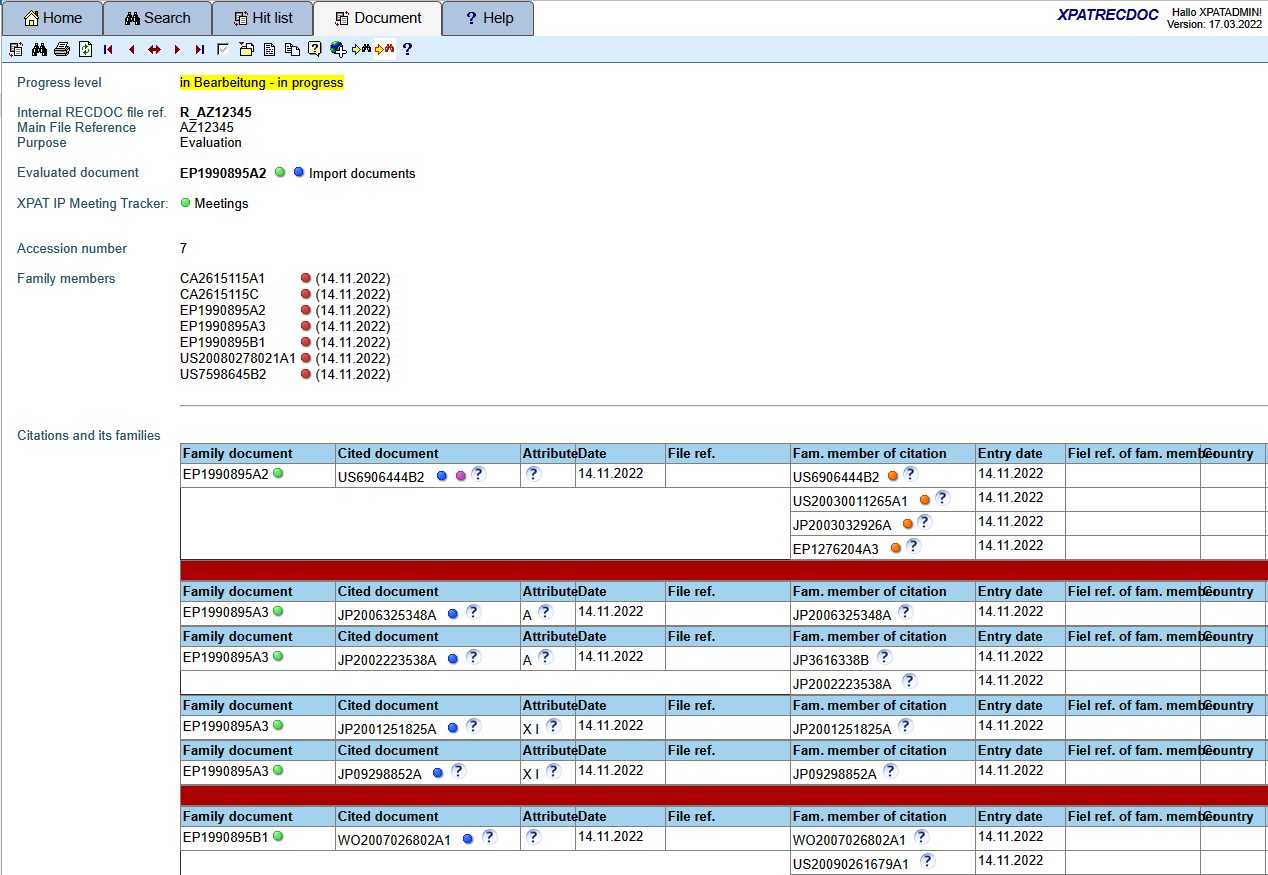XPAT RecDoc (Research and documentation)
XPAT RecDoc is an add-on module to the XPAT system, in which researches (strategy, results) can be systematically documented. With the help of the documentation one can be very profited in later orders.
Systematically documented research
The database module XPAT RecDoc is intended to fulfill the task of systematically documenting search or evaluation tasks that arise in the patent department. This means that XPAT users can enter search requests in XPAT RecDoc, which are then processed by an assigned person.
Interaction between researcher and client
When the first interim results are available, they can be sent to the client to discuss clarifications and specification as soon as possible. The client is made aware of these requests by the system. It is then an interactive process in which at the end it is documented what exactly was researched to answer the set task, where it was researched and above all what results were achieved in this research.
The goal is the reusability of the search results
If, in the course of time, new requests come to the patent department, it can first be researched in the XPAT RecDoc whether there were not already related orders that can be used as a foundation for the new searches that may need to be expanded. One saves thereby a good part of the work and one does not begin again completely from the beginning.
In addition to files, e-mail correspondence can also be stapled to the documentation
In addition to the actual searches, the associated correspondence is also recorded and filed in an orderly manner - retrievable at any time. E-mail correspondence can also be assigned to the stored searches. This makes it possible to trace what has been researched at any time and what the results were at certain points in time. The search file number can be transferred to XPAT documents and there is also a link to XPAT files.
What exactly can be documented in XPAT RecDoc?
- The internal searches that gave good results.
- The external searches, no matter where searches have been made.
- The internal hit lists, which provide a snapshot of the results.
- The publication number lists of the documents that are highly relevant in the XPAT RecDoc search file.
It is very important that the associated search file reference can be transferred to documents in the patent database, so that the significant and important results can be recorded for a search file. The client thus has direct and permanent access to the search result.

